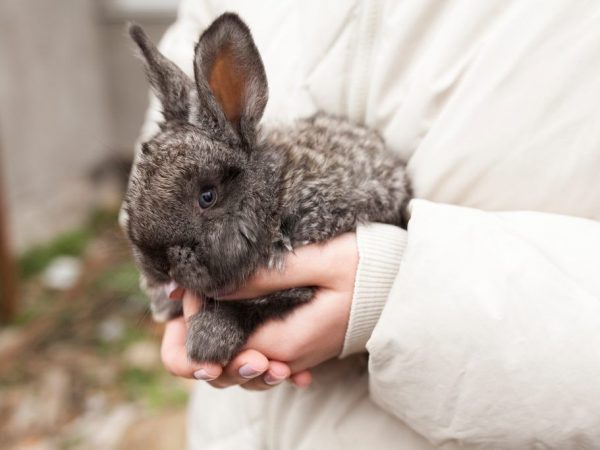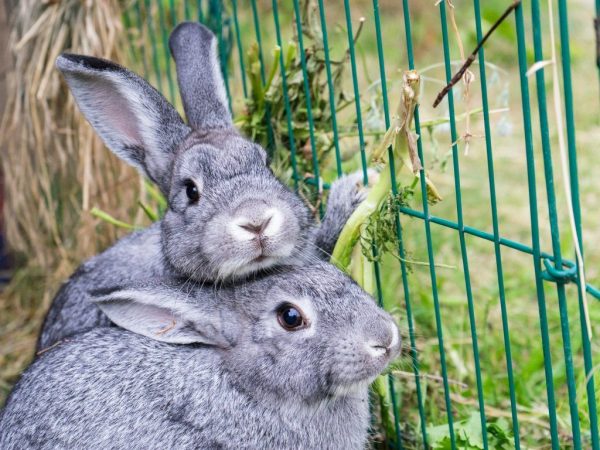The principle of artificial insemination of rabbits
Artificial insemination of rabbits is a frequently discussed topic at various scientific meetings and forums among rabbit breeders. There is a reasonable opinion that it is not advisable to use the method of unnatural fertilization of rabbits. We will try to outline all the arguments "for" and "against" below.

Artificial insemination of rabbits
Thanks to a number of studies, an answer was found to the question that torments many rabbit breeders, whether it is worth using artificial insemination of rabbits for such rapidly maturing and fertile animals. The answer is yes, absolutely!
Surroundings in natural conditions
Observing rational breeding technology, you can achieve good results in this matter - up to 8 rounds per year. At the same time, the number of born rabbits ranges from 7 to 9. This is possible due to the unique ability to combine the period of lactation and fertility in rabbits. In addition, females retain 70-80% of rabbits in the litter and, as a result, the yield of "marketable" rabbits will be 40-50 carcasses per year.
Do not underestimate the environmental factors that affect the activity and predisposition of rabbits to mating and bearing rabbits. It is also customary to take into account the seasonality in the issue of obtaining okrol. Rabbits and rabbits enter an active sexual fever from December to May, then the hunt for mating decreases, and in October and November it may disappear altogether, so some amateur rabbit breeders lose their arrival at breeding this species of animals. It is during this period that it is advisable to turn to unnatural insemination of rabbits.
Fertilization methods for females
In addition to the traditional method, you can also resort to the method of artificial insemination of rabbits. In order to have a good offspring, it is necessary to ensure that the correct number of males are available. In natural mating, for 10 queens, 1-2 males are kept, on breeding farms for 200 heads - up to 40 breeding individuals. Of this number, only a few will become honorable breeders with a high fertility rate.
Not all males favorably affect the productivity of the offspring, which significantly reduces the genetic potential of the herd, therefore, the services of the best males are resorted to as often as possible, while creating a deficit of the latter. The zootechnical method will help to reduce the lack of the best producers, which allows the females to be inseminated without a partner, that is, artificially. This method will increase the number of animals with valuable economic traits and in a short time check the producers for the quality of the hatched offspring.

Method of fertilization of females
Seed material (sperm) is collected from strong, healthy males with a fleshy constitution and active sexual reflexes. Biomaterial from one male can fertilize up to 50 queens. This will help reduce the number of males to mate.
To increase the fertility of selected producers, it is necessary to improve the diet and living conditions.Thanks to the use of this method of fertilization, the fertility of rabbits will be 89%, and the number of rabbits will be 6-9 individuals.
The technological cycle lasts no more than 30 minutes, one uterus takes up to 3 minutes. In four hands, you can manage to fertilize up to 70 females per run. The advantage of synthetic insemination in rabbits is that unused sperm can be frozen. This process will allow the delivery of seed to other regions.
Artificial knitting stages
Fertilization of a rabbit by introducing sperm into the uterus using a special kit can be conditionally divided into 3 stages:
- taking biomaterial from the male;
- biomaterial research;
- the introduction of the biomaterial directly into the uterus of the female.
To select material from the male, special devices are used: a fur rabbit glove or the female herself for arousal and an artificial vagina to collect material. After the semen enters the vaginal catheter, it is either diluted or frozen with liquid nitrogen.
Such insemination is carried out according to the uterine cervical type, which includes the introduction of sperm into the cervix, which creates more favorable conditions for the survival of sperm.
Ovulation in the female is induced by mating with an infertile male. Then they place it on a special table in the position of the coccyx down. Diluted furacilin applied to a cotton swab is used to treat the genitals of an animal.

Artificial insemination process
Semen with a score of at least 6 points and a sperm level of about 5-10 million are collected in a syringe. If the sperm has just been diluted, 3 ml will be needed. If it is frozen sperm at temperatures above 38 ° C and with a score of 3 with more than 4 million active sperm or has been stored at 0 ° C for 5-6 hours, 4 ml.
Next, the syringe is inserted into the genital tract by 12-14 cm, with the other hand holding the labia, directing it down, and then, bending it (the syringe) by 45 ° C, the male biomaterial is injected. Bending the syringe is necessary due to the fact that female rabbits have a two-horned uterus, which prevents sperm from entering directly into the cervix. No later than 2 hours, it is necessary to introduce a hormonal preparation to the rabbit to improve hunting and the likelihood of mating.
Let's sum up
In practice, it can be seen that the majority of rabbit farms in Europe and the CIS countries are increasingly resorting to the artificial method. This allows you to develop a genetic nucleus of males with high rates. Over 25 centers for the artificial insemination of rabbits have been created on the territory of the countries of the European Union, serving as a supplier of genetic material for the rabbit producer's farm, which has become a kind of "sperm bank".
Created in order to help small rabbit breeders save money and time for maintaining their own genetic core, such a "firm" has been helping to solve the problem of many for several years now. At the same time, the farm can spend the saved money on the development or improvement of the conditions for keeping animals.


